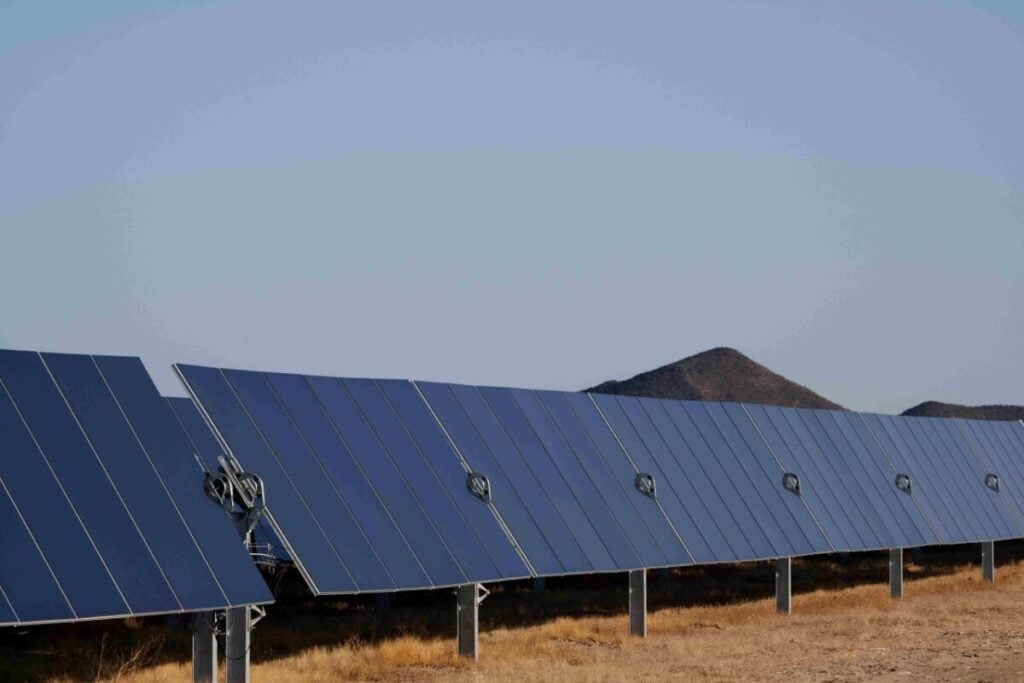
Queensland Investment Corporation (QIC) and EDP Renewables Australia have signed an agreement to develop a 400MWac solar-plus-storage project in Toowoomba, Queensland.
Punchs Creek Renewable Energy Project combines a 400MWac solar PV facility with a co-located 400MW/1,600MWh battery energy storage system (BESS).
Try Premium for just $1
- Full premium access for the first month at only $1
- Converts to an annual rate after 30 days unless cancelled
- Cancel anytime during the trial period
Premium Benefits
- Expert industry analysis and interviews
- Digital access to PV Tech Power journal
- Exclusive event discounts
Or get the full Premium subscription right away
Or continue reading this article for free
The partnership marks EDP’s first large utility-scale project in Australia and the first step toward a potential long-term collaboration between the Portuguese energy company and the Australian state-owned institutional investor.
QIC and EDP confirmed that the project is expected to reach financial close in 2026, with EDP currently in advanced discussions for a long-term offtake contract.
The Punchs Creek project comprises 480MWp (400MWac) of solar generation paired with the 4-hour duration battery energy storage component, positioning it among the larger hybrid renewable energy developments in Australia’s pipeline. It will be connected to Australia’s National Electricity Market (NEM).
Readers of Energy-Storage.news may be aware that, in October 2025, the project secured a generation revenue scheme under the Australian government’s Capacity Investment Scheme (CIS) Tender 4, which awarded 11.4GWh of solar-plus-storage projects across multiple developments.
The CIS framework provides revenue certainty for renewable energy projects by offering underwriting agreements that guarantee minimum revenue streams.
Miguel Fonseca, CEO of EDP Renewables APAC, described the partnership with QIC as marking another milestone in EDP’s strategy to expand its renewable energy portfolio across the Asia-Pacific region.
“EDPR views Queensland and Australia as key markets with strong fundamentals for renewables and is focusing on scaling hybrid projects, with the aim of deploying material capacity by 2030 as part of a longer-term pipeline of about 4GW,” Fonesca said.
QIC has a major presence across the Australian market. The Queensland-based institutional investor manages assets across multiple sectors and has established expertise in renewable energy project development and financing within the Australian market context.
The exclusivity agreement structure provides both parties with a framework to evaluate the potential of the partnership while advancing project development activities. This approach enables detailed due diligence and project optimisation before committing to final investment decisions and construction timelines.
Meanwhile, EDP Renewables operates renewable energy projects across four continents, bringing international expertise in large-scale solar and battery energy storage system development to the Australian market.
Octopus Australia reaches financial close on 486MWh DC-coupled solar-plus-storage site
In other news, Octopus Australia has achieved financial close on a AU$900 million (US$587 million) DC-coupled hybrid facility that combines 300MW of solar generation with a 243MW/486MWh BESS in New South Wales.
The Blind Creek Solar Farm and Battery project, located 8km northeast of Bungendore, a historic village in the Southern Tablelands between Sydney and Canberra, represents one of the largest DC-coupled solar-battery hybrid developments to reach financial close in Australia’s renewable energy sector.
The facility will generate approximately 735GWh of renewable energy annually while providing grid stability services to the National Electricity Market (NEM).
The DC-coupled configuration at Blind Creek represents a major technical advancement in hybrid renewable energy systems, the company claimed. Unlike AC-coupled systems, where solar PV generation and battery storage operate through separate inverters, DC-coupling enables direct current flow from solar modules to the BESS through DC/DC converters before final conversion to alternating current for grid connection.
This architecture reduces conversion losses and connection costs while optimising energy delivery during peak pricing periods.
SMA will supply inverter technology, whilst Wärtsilä will provide the DC-coupled battery storage system.
DC-coupling has become a trending topic in Australia, with Wärtsilä at the heart of numerous developments across the NEM and Western Australia. The Blind Creek Solar Farm and Battery project also represents the second time the Finnish company has partnered with Octopus Australia for a DC-coupled project, following the 128MWh Fulham solar-plus-storage site in Victoria.
Both of these stories first appeared on our sister site Energy-Storage.news as the items ‘QIC, EDP partner for 1,600MWh solar-plus-storage project in Queensland, Australia’ and ‘Octopus Australia reaches financial close on 486MWh DC-coupled solar-plus-storage site’.






